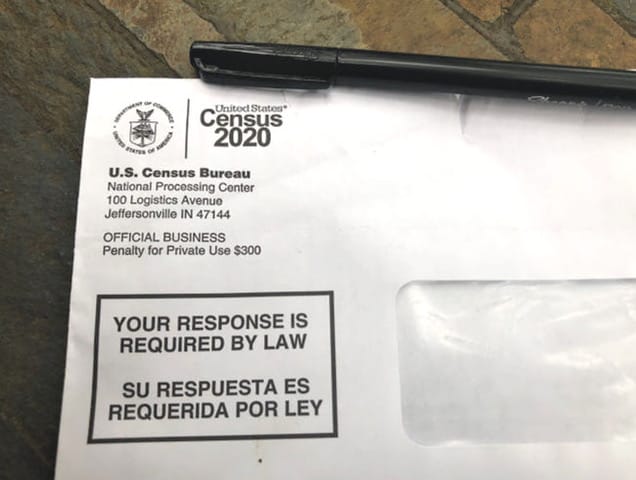

Uh oh...
It appears that you're using a severely outdated version of Safari on Windows. Many features won't work correctly, and functionality can't be guaranteed. Please try viewing this website in Edge, Mozilla, Chrome, or another modern browser. Sorry for any inconvenience this may have caused!
Read More about this safari issue.

Dear Arkansas, it’s June. Have you submitted your U.S. Census Bureau answers?
Sure, the very question might bring a mind to the brink of overwhelm during a time when heads are filled with so much else. But it’s precisely the circumstances of the last three months that have created a pronounced dependence on the kinds of state resources the census finances.
Get Counted
This is the opportunity for Arkansans to make sure crucial resources are distributed to the state. To the people. These include employment opportunities, quality education, medical services and roads.
Brad Cameron is the communications subcommittee chair for Arkansas Counts, a coalition committed to census accuracy in the state. He offered the above items not as an exhaustive list, but merely a few examples that connect the dots from filling out a form to bringing home the money.
Typically, the many rural areas in Arkansas have worked against the bureau’s efforts to make sure the state’s population is wholly included. Another barrier has been the concern across immigrant communities that by completing the form, they will record a non-citizenship status, a fear not yet eased by the 2018 Supreme Court decision to remove the citizenship question.
Cameron emphasizes the importance of submitting the 10-minute questionnaire or answering the questions on the phone or in person.
“Unfortunately, Arkansans who stand to benefit most from a complete and accurate count are also the most likely to be undercounted. That’s a big deal because a one percent undercount of our state will result in nearly a billion dollars lost over the next decade.”
One might say the census is essential.
Indeed, the money allotted funds basic community services. According to the Arkansas State Data Center, those dollars support Medicaid, transportation grants, public housing, tax credit programs, small business grants, nonprofits, families and individuals. Money goes to fire departments, schools and hospitals. Cameron confirmed that census data helped determine funding that made the recent emergency responses possible for people across the state: health care, COVID-19 testing, SNAP benefits and Alternative Methods of Instruction for Arkansas students.
With low participation comes consequences: “Every uncounted Arkansan means a loss of approximately $3,000 each year for the next ten years.”

A Look at the Numbers
- One Arkansan = $3,000
- Potential funding over the next decade: $6 to $7 billion dollars.
- As of this writing, the percentage of Arkansans who had submitted their answers: not quite 55%. Half the state.
- An undercount of 1% percent results in a loss of nearly $1 billion dollars.
- During Arkansas’s 2016 fiscal year, the state received $9,867,323,057
Due to the COVID-19 pandemic and its subsequent directives and recommendations, operations involving census workers in the field looked different this year. Regular operations have now resumed with a “phased approach,” safety guidelines and trained census employees sent out to deliver questionnaires and collect answers.
A Look at the Representation
The census is also used to determine congressional representation. “The Constitution provides for proportional representation in the U.S. House of Representatives and the seats in the House are apportioned based on state population according to the constitutionally mandated Census.”
Following the 2010 census, there was one representative in the House for approximately 711,000 people.
A Look at Census Law
The U.S. Census is mandated by the Constitution. Since 1790, the country has been at it, attempting to take an accurate count every 10 years.

Resources to Help You Get Counted
Perhaps the best news about the 2020 U.S. Census is that it’s the first in history available online.
Everyone can complete it at My2020Census.gov, on the phone in English (844-330-2020) or Spanish (844-468-2020). For additional language support and phone numbers, please see resources at this page on the Census.gov website.
Official U.S. Census Bureau site
Join the Conversation
Leave a Comment
One response to “Get Counted: What the U.S. Census Does for Arkansas”
 Leave a Reply
Leave a Reply
We do the work.
You check your email.
Sign up for our weekly e-news.
Get stories sent straight to your inbox!












 Leave a Reply
Leave a Reply
[…] you have your chart, it’s time to fill it out. Start with the United States census. “The census is your backbone,” Lamont says. In it you’ll find family names and dates, where […]